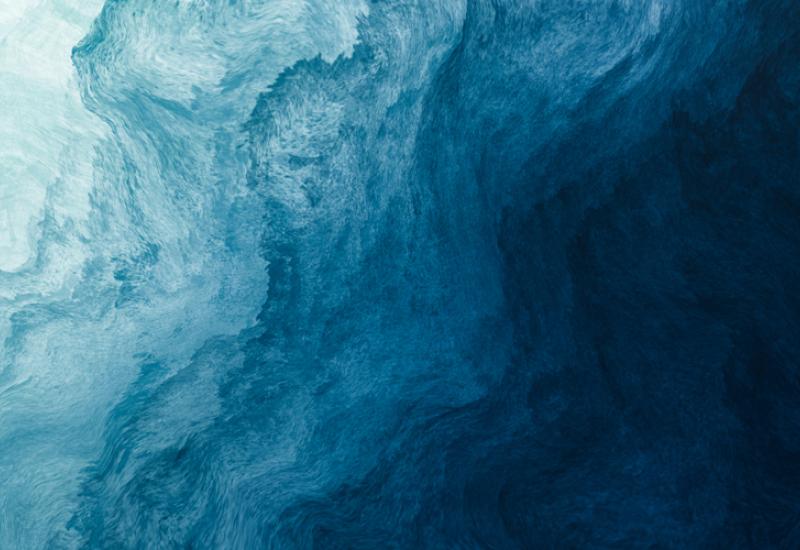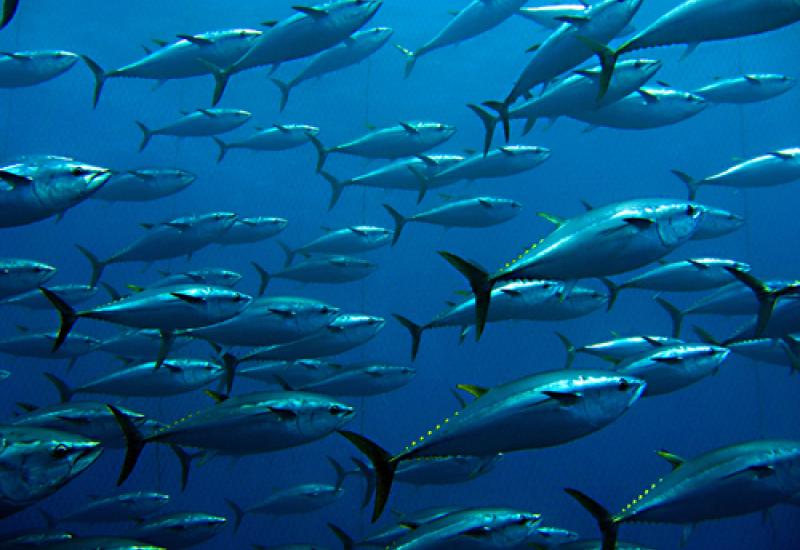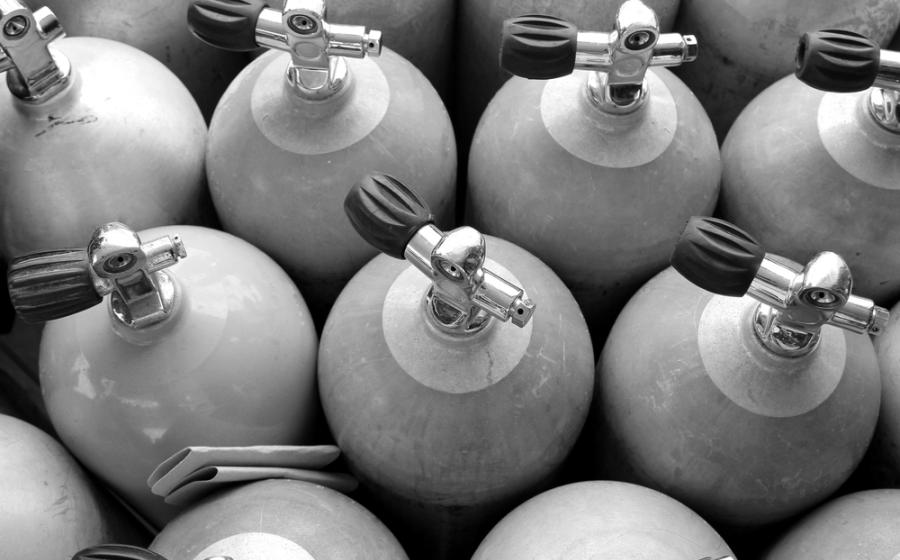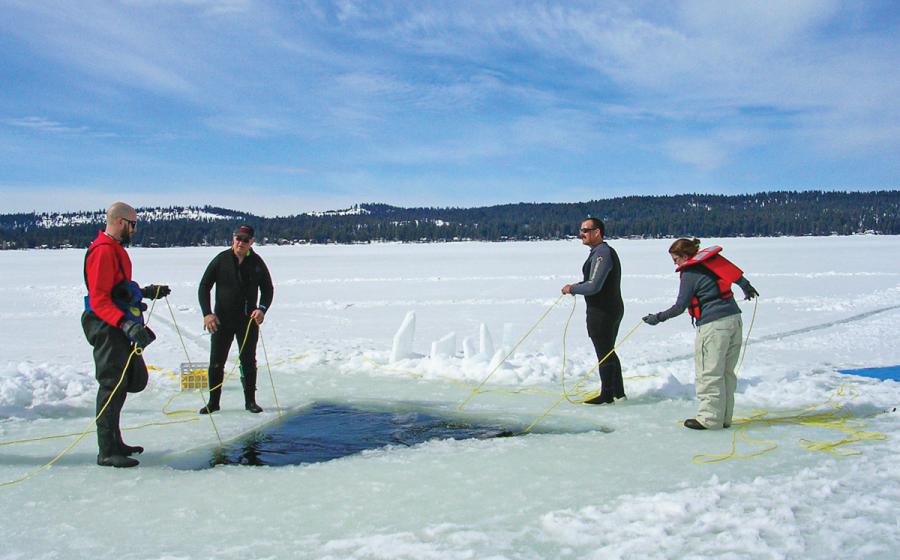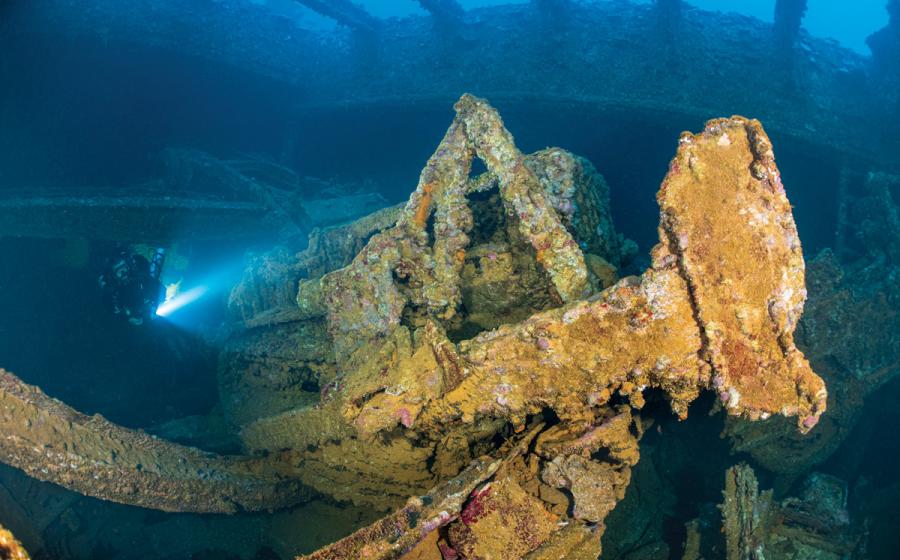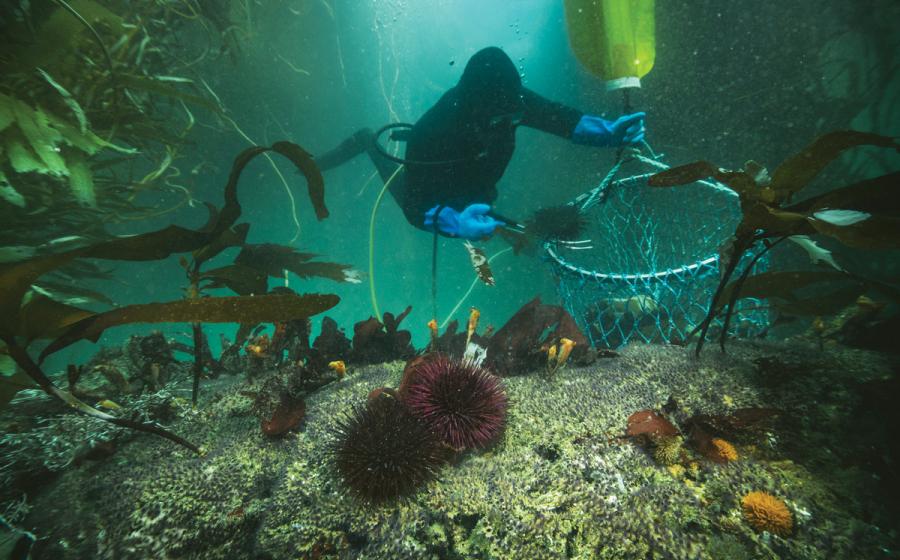How Much of the Ocean Has Been Explored? 17 of Your Ocean Questions, Answered.
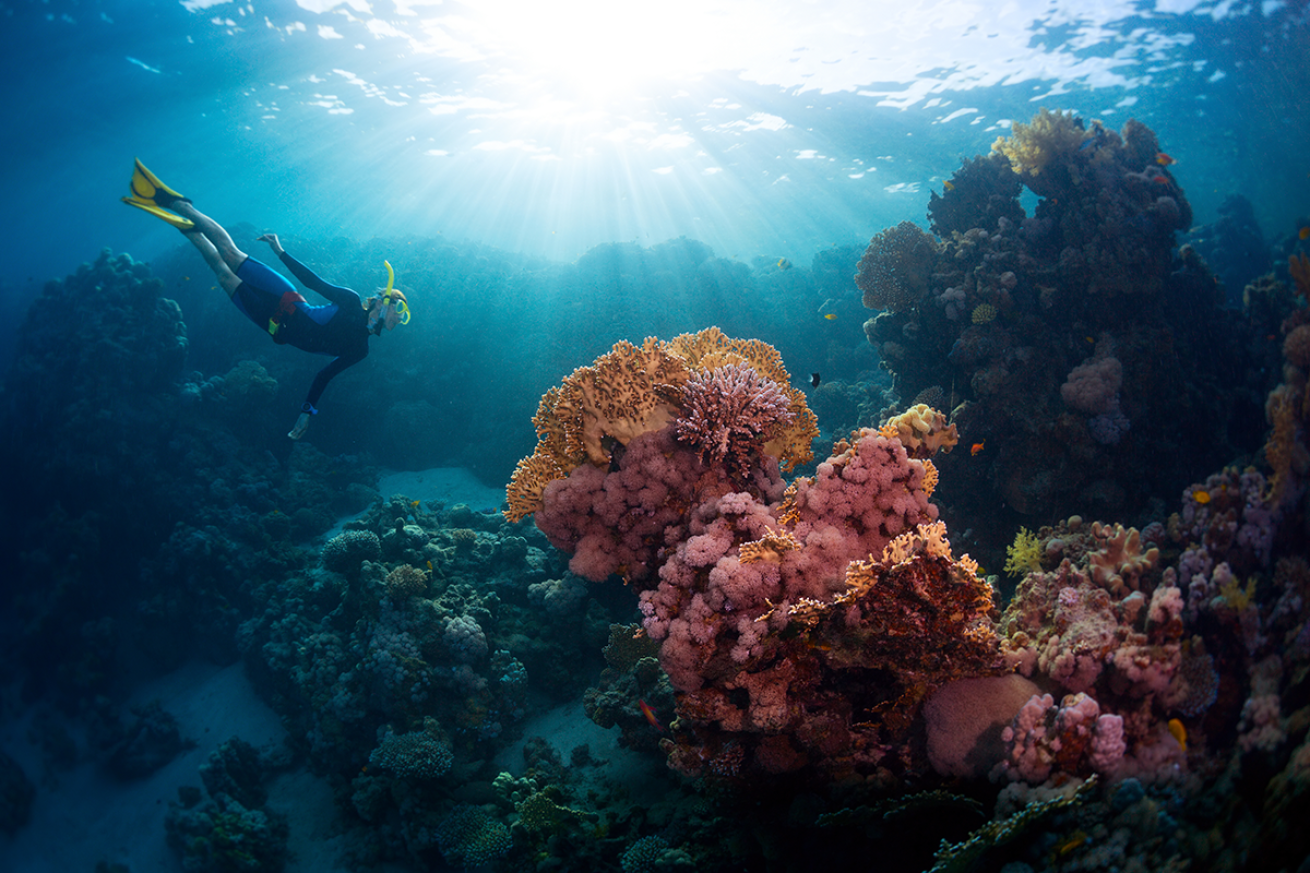
Shutterstock.com/Dudarev MikhailExploring coral reefs is one experience you should partake when scuba diving
Our global ocean is vast and uncontrollable—but not unknowable. Scientists have spent centuries unfurling its secrets, and here are some of the basic facts we’ve learned about our water planet along the way.
What is the deepest part of the ocean?
The deepest point in the ocean is the Mariana Trench, which is 36,021 feet deep. How deep is that? It’s deep enough that if you put Mount Everest at the bottom, the peak would still be more than a mile below the surface—and the trench itself is much longer than the Grand Canyon.
I find it surprising that so many people picture the Mariana trench as pristine isolated wilderness, while in reality people live there. “Generations of Indigenous activists living on the nearby Mariana Islands have worked for decades to protect the ocean resources in and around the Mariana Trench, with some of the protections going back to the 1970s,” Angelo Villagomez, a senior fellow at the Center for American Progress known as the “godfather of the Mariana Trench monument” told me. “Their advocacy culminated in the designation of the Mariana Trench Marine National Monument in 2009. But the US territory still struggles to receive the federal staffing they need to manage the monument, and implementation of the protected area has been stalled for many years.”
How deep is the Pacific ocean? How deep is the Atlantic ocean?
The Mariana Trench is the Pacific ocean’s deepest point, but the average depth of the Pacific ocean is about 14,000 feet. The Puerto Rico trench is the deepest point in the Atlantic ocean (28,232 feet deep), and the average depth is about 11,000 feet.
How much of the ocean has been explored?
You may have heard the statistic that “95% of the ocean is unexplored,” which is often used as a justification for belief in pseudoscientific nonsense, like: “95% of the ocean is unexplored, you can’t know for sure that megalodon is extinct!” (Friends, if there was a 60 foot long shark that bites whales in half living off the East Coast of the United States, there’d be a shred of evidence, and there simply is not any evidence whatsoever.)
Either way, the term “explored” is poorly defined. It depends on what tools and what scale we’re talking about. It’s fair to say that we’ve explored a relatively small percentage of the topography of the ocean floor at very high resolution—but 100% of the ocean has been mapped at a roughly 5 kilometer resolution. To be sure, there is a lot of work left to do to fully understand the ocean, but to claim “we’ve only explored 5% of the ocean” is a misleading oversimplification.
What is at the bottom of the ocean?
Depending on where you are, the bottom of the ocean is typically various types of rock, sand, or mud.
Why is the ocean salty?
Salt and minerals in the ocean come mostly from land runoff, but in the deep sea it comes from hydrothermal vents.
How many gallons of water are in the ocean?
NOAA’s Ocean Service says that there are a little more than 350,000,000,000,000,000,00 gallons of water in the ocean. This is about three hundred and twenty million cubic miles of seawater, (where one cubic mile is a one mile by one mile by one mile.)
What is the difference between an ocean and a sea?
Generally speaking, the difference between an ocean and a sea is a combination of size—oceans are bigger—and that seas are usually partially enclosed by land. This distinction is somewhat arbitrary, however, and some ocean literary scholars suggest instead teaching that there’s really only one global and interconnected ocean, because, really, is the line between the South Pacific Ocean and the South Atlantic Ocean really meaningful?
Why is the ocean blue?
The ocean appears blue because long-wavelength red light is preferentially absorbed, which is the same reason why the sky is blue blue.
What is the smallest ocean? What is the largest ocean? What’s the difference in their size?
While noting again that there’s really just one giant global interconnected body of water, geographers recognize five oceans. (If you learned in school decades ago that there are four, we now have the Southern Ocean too.) The smallest ocean is the Arctic, which is about 5.5 million square miles. The Pacific ocean is the largest, at about 64 million square miles. That makes the Pacific ocean more than fifty-eight million square miles larger than the Arctic—enough space to fit the continental U.S. more than 18 times.
What causes ocean currents?
Wind, tides, and the Earth’s rotation play a role in ocean currents. Currents are also driven by different water densities—not all seawater is the same, and differences result in flow from one part to the other.
How do ocean currents affect climate?
The global system of ocean currents helps to regulate climate by moving warm water around the globe. Notably, life in much of the Northern hemisphere is possible because the Gulf stream brings warm water from the tropics polewards. (Fun Fact: A collapse in this system was the basis of the plot of the 2004 climate change disaster film “The Day After Tomorrow.”)
What is ocean acidification? What causes it?
Ocean acidification has been called “climate change’s evil twin.” Essentially, it’s the changing of the ocean’s pH to become more acidic, which happens because there’s more CO2 in the atmosphere. An altered pH is very, very bad for anything that has a shell, because changing the chemistry of the ocean means that it suddenly takes more energy to grow and maintain your shell. In some cases, shells can even dissolve entirely.
How much trash is in the ocean?
There are a lot of myths and misconceptions about the ocean trash problem– in fact this was the subject of my first column with “Scuba Diving” magazine. Oft-repeated claims like “soon there will be more plastic in the ocean than fish” are total nonsense, but to be sure, there is far too much trash in the ocean. The Ocean Conservancy estimates that every year, 11 million tons of plastics alone enter the ocean, and that there are hundreds of millions of tons of trash already there.
Ask a Marine Biologist is a monthly column where Dr. David Shiffman answers your questions about the underwater world. Topics are chosen from reader-submitted queries as well as data from common internet searches. If you have a question you’d like answered in a future Ask a Marine Biologist column, or if you have a question about the answer given in this column, email Shiffman at [email protected] with subject line “Ask a marine biologist.”

Courtesy ImageDavid Shiffman
Dr. David Shiffman is a marine conservation biologist specializing in the ecology and conservation of sharks. An award-winning public science educator, David has spoken to thousands of people around the world about marine biology and conservation and has bylines with the Washington Post, Scientific American, New Scientist, Gizmodo and more. Follow him on @WhySharksMatter on Twitter, Facebook and Instagram, where he’s always happy to answer any questions about sharks.
The views expressed in this article are those of David Shiffman, and not necessarily the views Scuba Diving magazine.


